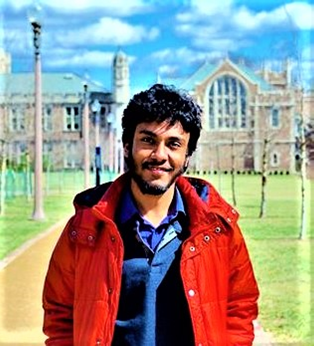SPRING 2022
PHYSICS Colloquium
April 21 2022, Thursday, 3:30 pm CST
Physical Sciences 110
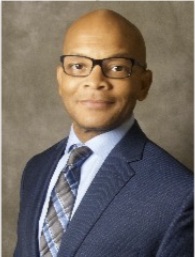 Dr. Donnell Walton
Dr. Donnell Walton
Director of the Corning Technology Center in Silicon Valley
The industrial lab as an environment to learn, know and do science
Corning Incorporated has a 170-year history of life-changing innovations--starting with railroad signal lenses and the mass production of Edison's light bulb. After a brief overview of our history of inventions and the underlying science, I'll discuss some of the hottest current areas in applied materials science and physics research along with some emerging applications. I'll close with some professional reflections from my quarter century of experience as an industrial physicist performing and leading transdisciplinary research.
High Energy Seminar
April 07, 2022, Thursday, 12:30 pm CST
147 Physical Sciences
Sudip Jana
Max Planck Institute
Heidelberg
Oklahoma State University Alum
TITLE: Light from Neutrinos
Abstract: Neutrinos are one of the most abundant of all known particles in the Universe, but yet the least understood ones. In the Standard Model, neutrinos are massless and interact only via the weak force. However, the discovery of neutrino oscillations implies that neutrinos are massive and mixed. Therefore, the Standard Model must be extended to account for the tiny neutrino masses. In these extensions, neutrinos also acquire electromagnetic properties through quantum loops effects. The theoretical and experimental investigation of neutrino electromagnetic interactions can serve as a powerful tool in searching for the fundamental theory behind the neutrino mass generation mechanism. We show that the models that induce neutrino magnetic moments while maintaining their small masses naturally also predict observable shifts in the charged lepton anomalous magnetic moment. This shift is of the right magnitude to be consistent with the Brookhaven measurement as well as the recent Fermilab measurement of the muon g-2. This points out the direct correlation between the magnetic moment of SM charged lepton and neutral lepton (neutrino) by showing that the measurement of muon g-2 by the Fermilab experiment can be an in-direct and novel test of the neutrino magnetic-moment hypothesis, which can be as sensitive as other ongoing-neutrino/dark matter experiments. Results will be discussed.
PHYSICS Colloquium
March 22, 2022, Tuesday, 3:30 pm CST
via Zoom
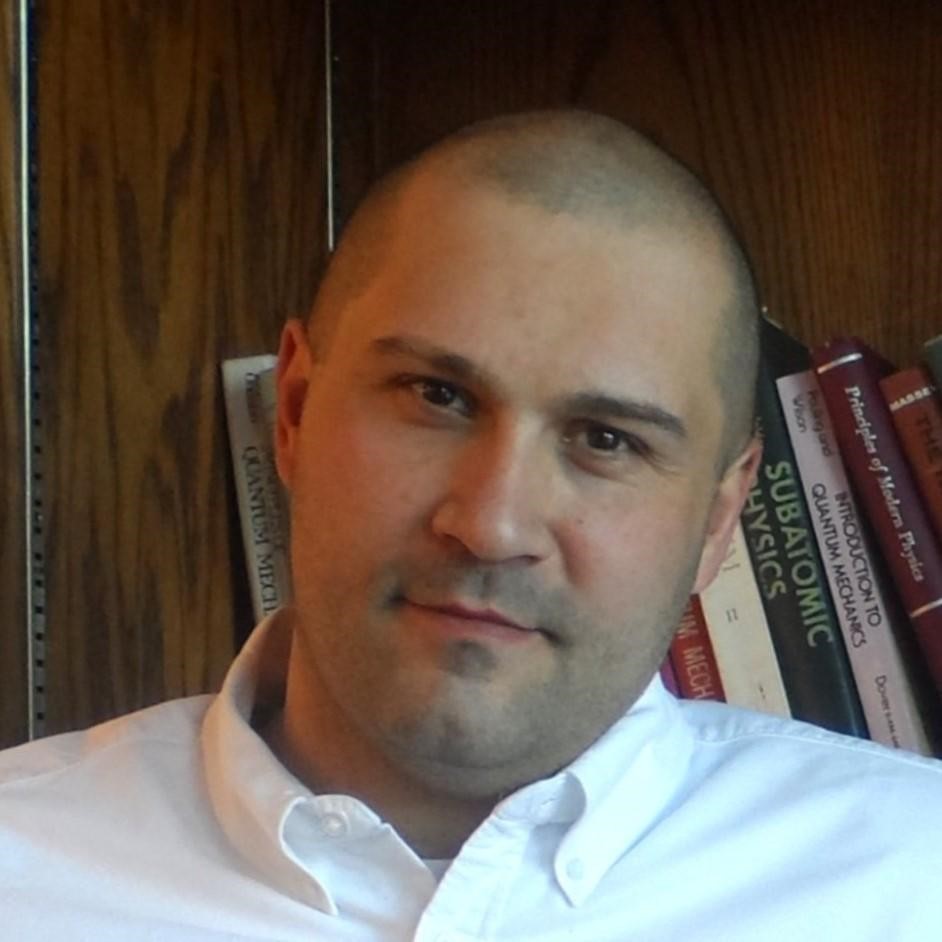
Dr. Andreas Vasdekis
University of Idaho
Microbial Metabolic Noise
From the very first bioimaging experiments, it became clear that no two genetically identical cells “look” the same in size and content. This phenomenon is generally referred to as ‘noise’ and is now better understood, both in the context of how single cells shape the behavior of a population, and its physical origins [1].
In this talk, I will present our findings of how noise impacts microbial metabolism, with a focus on cell growth and lipid production [2-5]. In particular, I will detail our recent discovery of the asymmetric partitioning of molecular content between two dividing cells, and the homeostasis of intracellular molecular crowding [5].
Further, I will summarize our optical microscopy research on the metabolic imaging of single, living cells that made these findings possible. Here, my focus will specifically be on quantitative mass microscopy, and the imaging of metabolic and gene expression dynamics with minimal phototoxicity and high throughput rates [6-8].
References:
[1] A. E. Vasdekis, A. Singh, Wiley Systems Biology and Medicine, 10.1002/wsbm.1512 (2020).
[2] A.E. Vasdekis, H. Alanazi, A. M. Silverman, C. J. Williams, A. J. Canul, J. B. Cliff, A. C. Dohnalkova, G. Stephanopoulos, Nature Communications 10, 848 (2019).
[3] A. E. Vasdekis, A. M. Silverman, G. Stephanopoulos, Scientific Reports 5, 17689 (2015).
[4] A. E. Vasdekis, A. M. Silverman, G. Stephanopoulos, PLOS ONE 12, e0168889 (2017).
[5] S. Nemati, A. Singh, S. D. Dhuey, A. McDonald, D. M. Weinreich, A. E. Vasdekis, bioRxiv (2021).
[6] N. R. Subedi, P. S. Jung, E. L. Bredeweg, S. Nemati, S. E. Baker, D. N. Christodoulides, A. E. Vasdekis, Scientific Reports 10, 20150 (2020).
[7] N. R. Subedi, S. Yaraghi, P. S. Jung, G. Kukal, A. G. McDonald, D. N. Christodoulides, A. E. Vasdekis, Optics Express 29, 31941 (2021).
[8] T. Sanchez, N. R. Subedi, C. Thompson, L. Sheneman, A. E. Vasdekis, ACS Photonics 8, 2876 (2021).
PHYSICS Colloquium
March 10 2022, Thursday, 3:30 pm CST
via Zoom
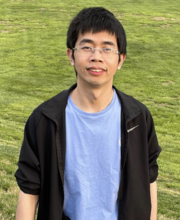 Dr. Xueda Wen
Dr. Xueda Wen
Harvard University
Time-dependent Driven Quantum Critical Systems
Non-equilibrium phenomena in many-body quantum systems are cutting-edge research topics in modern physics. One central question is how to identify and characterize the emergent dynamical phases in the non-equilibrium process. In this talk, I will introduce a family of exactly solvable time-dependent driven quantum many-body systems at the critical point. Not only being exactly solvable, these examples exhibit a rich variety of dynamical phenomena, such as a dynamical phase transition between heating and non-heating phases during the time evolution. When subjected to periodic/quasi-periodic/random drivings, I will show how the emergent dynamical phases are related to the properties of wavefunctions in crystals/quasi-crystals/Anderson localizations that we have learnt in our undergraduate physics. Many interesting future directions will be introduced in the end.
PHYSICS Colloquium
March 8 2022, Tuesday, 3:30 pm CST
via Zoom
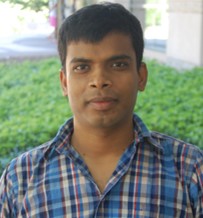 Dr. Susanta K. Sarkar
Dr. Susanta K. Sarkar
Colorado School of Mines
Looking at Life Through Randomness
One-third of the talk: Randomness is ubiquitous around us, and we often repeat experiments and average with an assumption that the underlying randomness is Gaussian-distributed. I will introduce the Poisson process, a type of randomness that has a constant probability of occurring in each spatial or temporal step. Many natural processes, including radioactive decay, photons from a laser, biomolecular interactions, chocolate chips in cookies, cell distribution in vitro tissue model, and so on, can be either described or approximated as a single or a chain of Poisson processes. We have used the Poisson process approach to understand the relationship between random protein dynamics and activity, which I will present in the context of matrix metalloproteases (MMPs).
Two-thirds of the talk: MMPs, a family of 23-member enzymes, interact with and degrade many biomolecules in the human body, and as such, MMPs have diverse functions and are directly or indirectly related to most human diseases. Scientists have tried to target MMP functions using drugs for treating diseases. For example, we need to stop collagen degradation by MMPs to prevent cancer metastasis. However, drugs that prevent MMPs from degrading collagen also inhibit other useful functions of MMPs, leading to adverse side effects and failures of clinical trials. We hypothesize that if we understand how MMPs interact with different biomolecules (substrates), not just collagen, we may change one function of MMP without affecting its other functions. I will share measurements and simulations of MMP dynamics at the single molecule level that suggest each substrate has its unique signature in MMP at the catalytic and distant allosteric sites. We have identified allosteric sites or "fingerprints" of several substrates, including collagen fibril, fibrin, alpha-synuclein aggregates, and amyloid-beta aggregates. Screening drugs against substrate-specific allosteric sites enables a better selection of drugs based on single molecule insights.
PHYSICS Colloquium
March 3 2022, Thursday, 3:30 pm CST
via Zoom
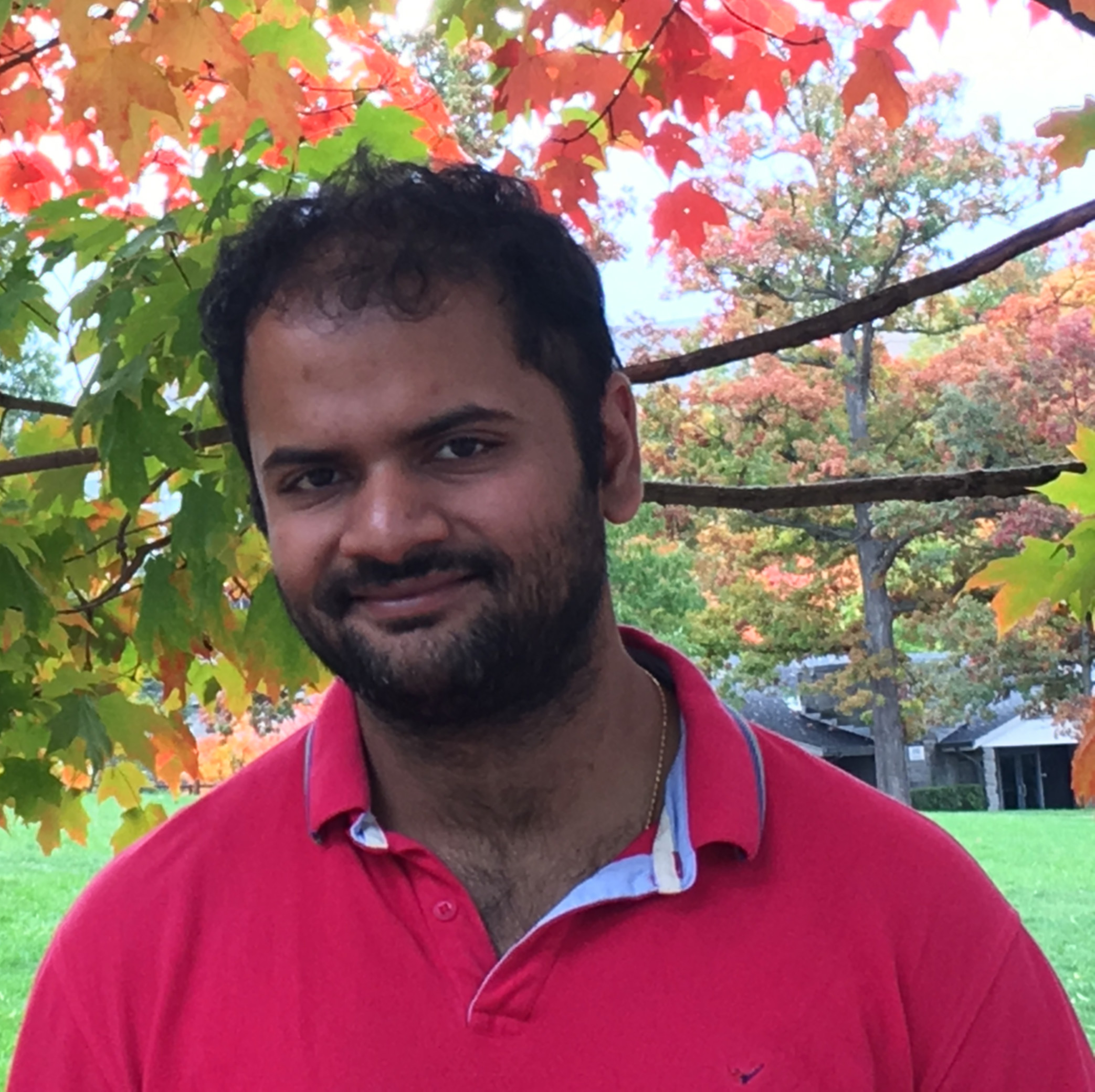 Dr. Sayan Choudhury
Dr. Sayan Choudhury
University of Pittsburgh
Non-equilibrium Dynamics of Synthetic Quantum Matter
In recent years, rapid advances in the development of quantum technologies have led to the possibility of creating and manipulating large-scale “synthetic quantum matter”. These unique many-body platforms synthesized from ultracold atoms, molecules, ions, and photons provide a powerful and versatile route to elucidate quantum phenomena that may be difficult (or even impossible) to realize elsewhere in nature. In this colloquium, I will present some of our recent work on understanding the non-equilibrium properties of these systems. In the first part of the talk, I will propose a route to realize a discrete time crystal in a periodically driven quantum system. A time crystal is a fascinating non-equilibrium phase of matter that exhibits spontaneous time-translation-symmetry breaking. I will demonstrate that a many-body interference mechanism can be harnessed to create an eternal time crystal with global "all-to-all" interactions. In the second part of the talk, I will describe quantum information scrambling in a chaotic spin-chain with competing short and long-range interactions. I will argue that this system can exhibit fast scrambling, thereby providing a route to probe aspects of quantum gravity in near-term experiments. I will then briefly describe the kaleidoscope of quantum phases that emerge in this system and conclude with a a brief overview of future research directions.
PHYSICS Colloquium
March 1 2022, Tuesday, 3:30 pm CST
via Zoom
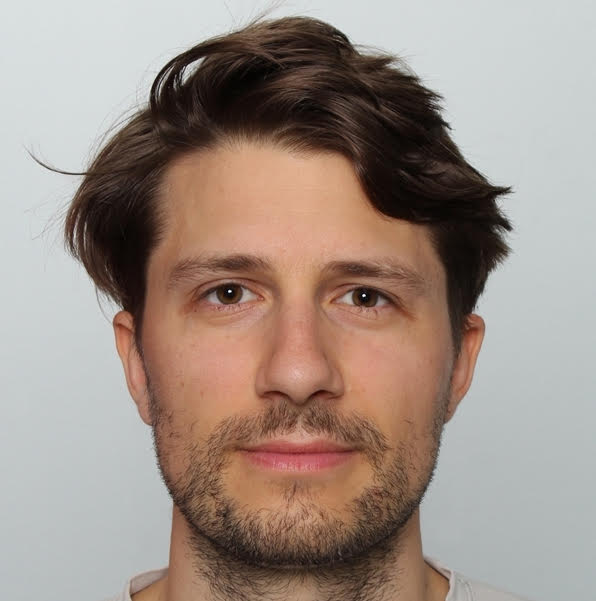 Dr. Victor Colussi
Dr. Victor Colussi
University of Trento
Exploring Quantum Fluids with Ultracold Atoms
Quantum fluids display such spectacular macroscopic quantum effects as superconductivity and superfluidity. Yet underlying these phenomena is a deceptively simple question: What happens when particles cease to become separate objects and begin to feel their surrounding neighbors? Understanding this transformation in the presence of strong correlations has remained a difficult question across many branches of physics. Recently, ultracold atomic gases have emerged as a versatile platform for the applied quantum simulation of these systems. I will describe on-going efforts using ultracold atomic Fermi superfluids to search for the condensed matter version of the Higgs mode. I will also highlight how the discovery of counterintuitive Borromean few-body states in ultracold atomic Bose gases has opened up a new frontier in the study of strongly correlated quantum fluids.
PHYSICS Colloquium
February 24 2022, Thursday, 3:30 pm CST
via Zoom
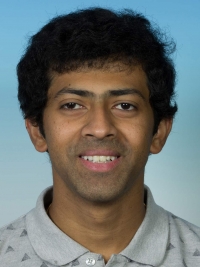 Dr. Bhuvanesh Sundar
Dr. Bhuvanesh Sundar
JILA, University of Colorado, Boulder
New frontiers for variational quantum algorithms: quantum entanglement and information scrambling
Variational quantum algorithms are rapidly emerging as a new paradigm for performing computations on noisy intermediate-scale quantum devices towards various applications. Harnessing the power of both classical and quantum computers, these algorithms implement parameterized quantum circuits that are trained by a classical optimizer, to produce a desired quantum state or solution to a classical optimization problem. They have been successfully used to solve optimization problems arising in in mathematics, computer science, and many-body physics. In this talk, I will present two novel applications of variational techniques. In the first application, I will use variational techniques to learn the entanglement Hamiltonian for subsystems in a strongly correlated many-body wavefunction, which is crucial to characterizing entanglement in the quantum many-body state. I will show that the technique efficiently learns the entanglement Hamiltonian, and produces results consistent with predictions from field theory. In the second application, I will use variational state preparation to probe quantum information scrambling in a many-body system. I will describe experiments which prepared the thermofield double state for spin models at finite temperature, and made the first experimental measurement of out-of-time-ordered correlators at finite temperature. I will conclude by discussing new and promising avenues for variational quantum algorithms.
PHYSICS Colloquium
February 22 2022, Tuesday, 3:30 pm CST
via Zoom
 Dr. Sharad Gupta
Dr. Sharad Gupta
IIT Indore, India
Near-Infrared Optical Imaging, Diagnosis, and Therapeutics
Biological tissue is an optically turbid medium with a dominant scattering and absorption in the visible wavelength range. However, the tissue is relatively transparent with minimal absorption and scattering from ~650 nm to ~950 nm. This near-infrared (NIR) wavelength window could be used for extracting molecular information for diagnostic applications and therapeutics. The use of a NIR exogenous fluorescence contrast agent enables us to visualize deeply buried inhomogeneities in tissue. We have developed optically active biocompatible and biodegradable polymeric and protein-based nanoparticles for near-infrared fluorescence imaging. Due to significant absorption in NIR wavelength, the nanoparticles are used for photothermal therapy applications. In the NIR window, the less scattering, low endogenous absorption, and almost zero tissue autofluorescence improved molecular characterization. Recently, we have developed a Raman signal enhancing technique, nano-trap enhanced Raman spectroscopy, for bio-fluid analysis. For this, samples were excited with a NIR laser (785 nm). This technique has increased the range of detection of diagnostically relevant biomolecules. Therefore, the tissue transparent NIR wavelength range provides an exciting option for rapid disease diagnosis and efficient therapeutics.
PHYSICS Colloquium
February 17 2022, Thursday, 3:30 pm CST
via Zoom
 Dr. Thomas Bilitewski
Dr. Thomas Bilitewski
JILA, University of Colorado, Boulder
Exploring Long Range Dipolar Interactions: From collective dipolar spin dynamics and layer exchange to light-mediated interactions and Pauli-Blocking
In this talk I will discuss recent theoretical and experimental work exploring the dynamics of dipolar quantum systems for quantum sensing, simulation and discovery. I will begin by discussing our theoretical proposal using dipolar molecules confined in two dimensions as a platform for robust generation of entangled states, useful for quantum metrology and quantum enhanced field sensing. To this end I will discuss how we can understand the dynamics of the dipolar quantum gas in terms of a long-range highly-collective spin model in mode-space. The highly collective nature of the resulting model allows us to overcome challenges of losses inherent to dipolar molecules in bulk systems, and results in dynamics robust to dephasing and thermal noise in the degenerate quantum degenerate regime. I will then continue by presenting recent experimental work developing the tool box required to prepare and probe molecules in layer geometries, and our theoretical work on understanding the spin dynamics resulting from dipolar exchange. The dipolar interaction induced spin exchange between adjacent layers enables strong losses within layers, allowing to probe the coherent exchange process via the measurement of the molecular loss. I will discuss how in presence of electric field gradients the spin dynamics can only be understood in terms of inelastic collisions between molecules in adjacent layers, converting motional into internal energy during the exchange process. This part highlights how motional dynamics and spin dynamics are intertwined in this system. Finally I will discuss the interplay of light-mediated dipolar interactions, atomic motion and quantum statistics in the problem of observing Pauli-blocking enhanced life-times of optically excited states in a 2D Fermi gas. I will present a theoretical framework developed to account for the main cooperative effects due to the dipolar interactions mediated by the exchange of photons, and the statistics of Fermions enabling us to identify a favourable regime in which Pauli-blocking can be clearly distinguished from cooperative effects, and present experimental observations in qualitative agreement with our theoretical predictions.
References: PRL 126, 113401, arXiv:2112.13423, arXiv:2108.02819
PHYSICS Colloquium
January 20 2022, Thursday, 3:30 pm CST
Physical Sciences 110
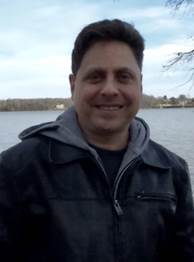 Dr. Joseph G. Tischler
Dr. Joseph G. Tischler
Homer L. Dodge Department of Physics and Astronomy
University of Oklahoma
3D Printed Infrared Metamaterials
Intense research on two-photon polymerization (2PP) processes has led to the development of sophisticated commercial apparatus capable of producing arbitrary 3D polymer scaffolds with spatial resolutions as high as 170nm. Generally speaking, these polymer-based constructs do not interact with photons due to their low conductivity and low dielectric constants. Therefore, they do not make good optical metamaterials by themselves; however, metals and materials with high dielectric constants such as polar dielectrics (e.g., Si, hBN and SiC) do. In this work we produced novel optical metamaterials combining 2PP (or 3D printed) structures with e-beam evaporation, atomic layer deposition and/or reactive-ion etching. Furthermore, we compare optical measurements performed on these structures with full-wave electromagnetic simulations, demonstrating the strength of these fabrication methods for chiral/non-chiral structures suitable for applications such as SERS, SEIRA, light steering and subwavelength light focusing.

